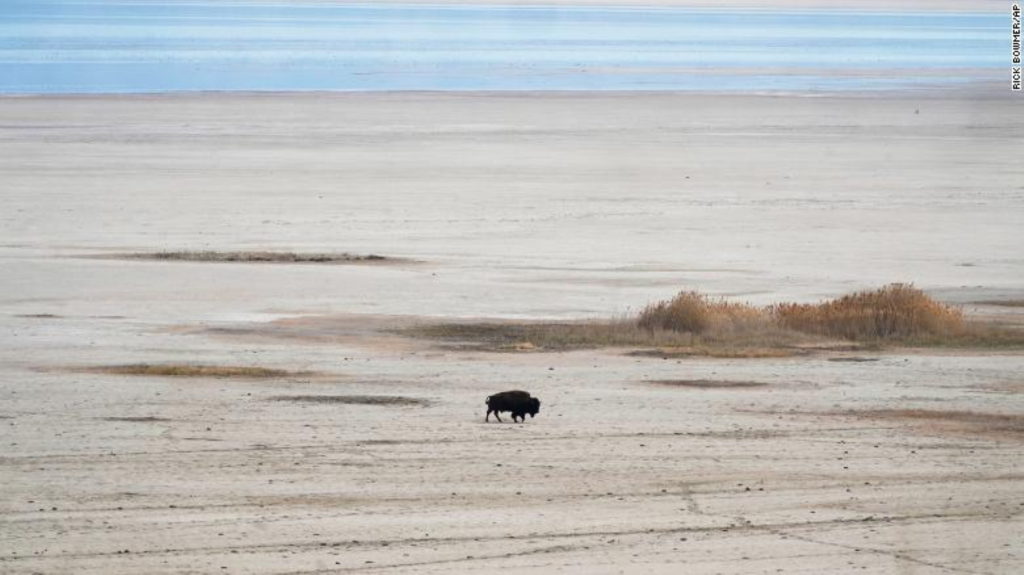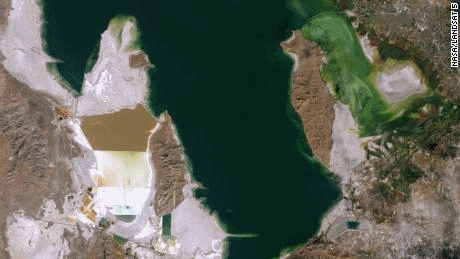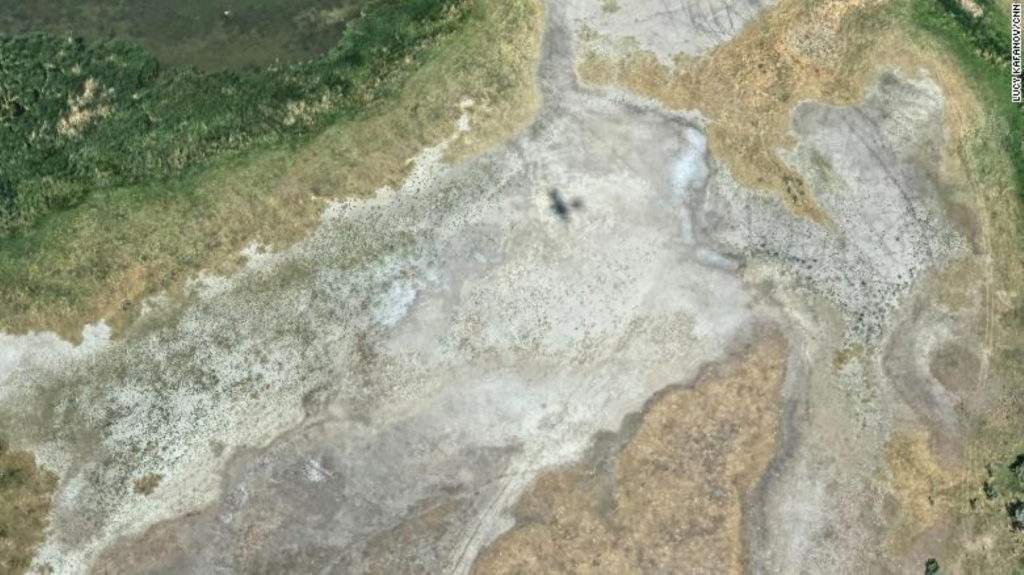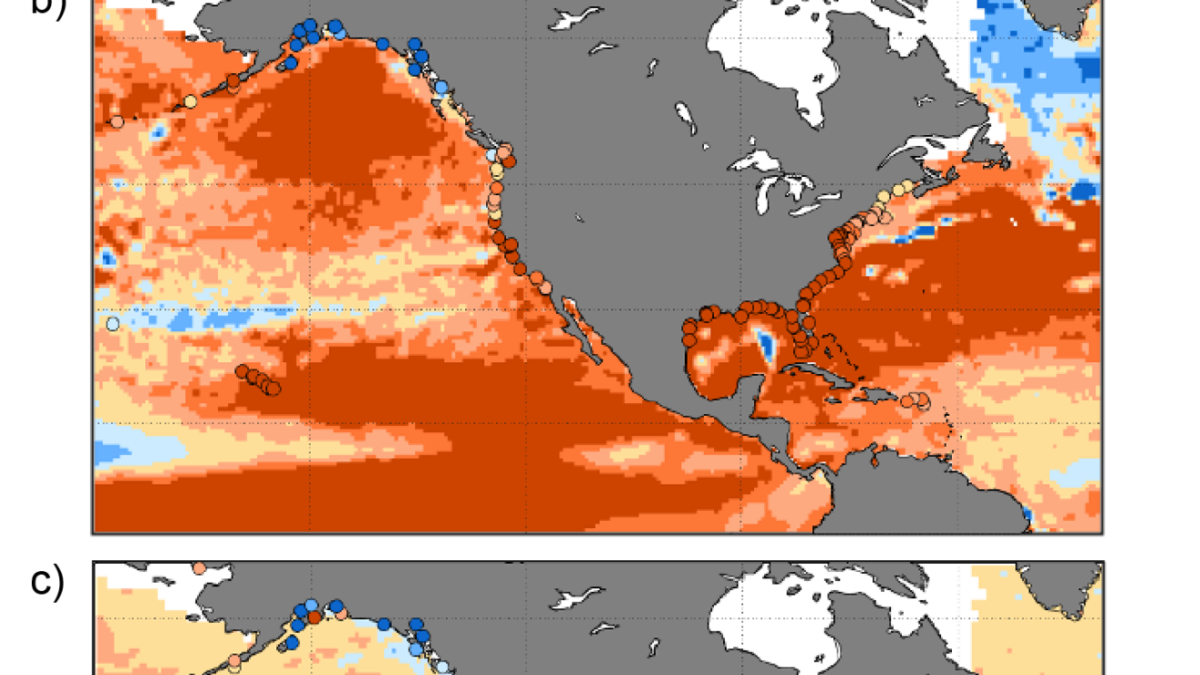Great Salt Lake is shrinking fast – Scientists demand action before it becomes a toxic dustbin – “We’re on the doorstep of a catastrophe”

By Lucy Kafanov, Leslie Perrot, and Eliott C. McLaughlin
17 July 2021
Great Salt Lake, Utah (CNN) – Great Salt Lake is also known as America’s Dead Sea — owing to a likeness to its much smaller Middle Eastern counterpart — but scientists worry the moniker could soon take new meaning.
Human water consumption and diversion have long depleted the Utah lake. Its level today is inches away from a 58-year low, state officials say, and Western drought conditions fueled by the climate crisis have exacerbated conditions.
The worst part? It’s only July, and the lake historically doesn’t reach its annual low until October.
“I have never seen it this bad — not in my lifetime,” said Andy Wallace, soaring over the body of water in a prop plane, as he’s done for years as a commercial pilot.
Simply put, the largest salt lake in the Western Hemisphere is shrinking rapidly. Left alone, the lake’s footprint would span 2,100 square miles — more than three times the area of Houston. An analysis published last year showed that water siphoned off the rivers that feed the natural wonder had reduced its level by 11 feet, depleting the lake area by more than half.
“Twenty years ago, this was under about 10 feet of water,” said Kevin Perry, chairman of the department of atmospheric sciences at the University of Utah, as he rode a bike in July across the desiccated lake bed.

Dying organisms and arsenic
Perry and other scientists worry they’re watching a slow-motion calamity unfold. Ten million birds flock to the Great Salt Lake each year to feed off of its now-struggling sea life. More pelicans breed here than most anywhere else in the country.The trouble trickles up the food chain. The Utah Geological Survey openly expressed its fear Thursday that the shrinking lake levels threaten to kill microbialites — underwater reef-like mounds that help feed brine flies, brine shrimp and, thus, the 338 species of birds that visit each year. […]
Economic downturn isn’t the only threat to humans in the area. Utah’s soil is naturally high in arsenic, a toxic compound that causes a frightening range of health problems. When it washes downstream, it lands in the lake, Perry said. When the wind blows, as it regularly does quite fiercely, it kicks up the dusty lake bed.
“One of the concerns we have is the particles that are coming off the lake getting into people’s lungs,” he said. “Fifteen to 20 years ago, when the lake was higher, most of these dust spots were covered up, and if you cover them up with water, they don’t produce dust. And so as the lake has receded, it’s exposed more and more of that lake bed. … As we get the larger area, we have more frequent dust storms.”
Owens Lake, a mostly dry lake east of the California’s Sequoia National Forest, was diverted to the Los Angeles Aqueduct almost a century ago, Perry noted. Though some water is returning to the lake, its dry bed is the largest source of PM-10 pollution — large, inhalable dust particles — in the nation. Great Salt Lake is much larger than Owens Lake, and whereas the population around Owens Lake is about 40,000, there are more than 2 million people living around Great Salt Lake, Perry points out.
“This lake could become one of the larger dust emission sources in North America as well,” he said. “Right now, the lake bed is protected by a fragile crust, and if that crust is disturbed or erodes over time, then this lake could start to emit a lot more (dust).” […]

While human behavior remains scientists’ primary concern, the lack of rain out West isn’t helping. Great Salt Lake now is like water sitting in a plate, whereas most lakes resemble a cup, said Jaimi Butler, co-editor of the 2020 analysis showing the lake area had shrunk by 51%.
The shallow waters are more prone to evaporation in drought conditions, and while the lake’s level ebbs and flows over any given year, the lake tends to reach its low point in the fall, around October. The lake will continue to drop and shrink over the next three months, and the water level could sink as much as 2 more feet by Halloween, Butler suspects.
“Keeping water in Great Salt Lake is the biggest thing that keeps me up at night,” said Butler, a wildlife biologist who grew up around the lake and serves as coordinator for the Great Salt Lake Institute at Westminster College. “We’re on the doorstep of a catastrophe.” [more]
Great Salt Lake is shrinking fast. Scientists demand action before it becomes a toxic dustbin


